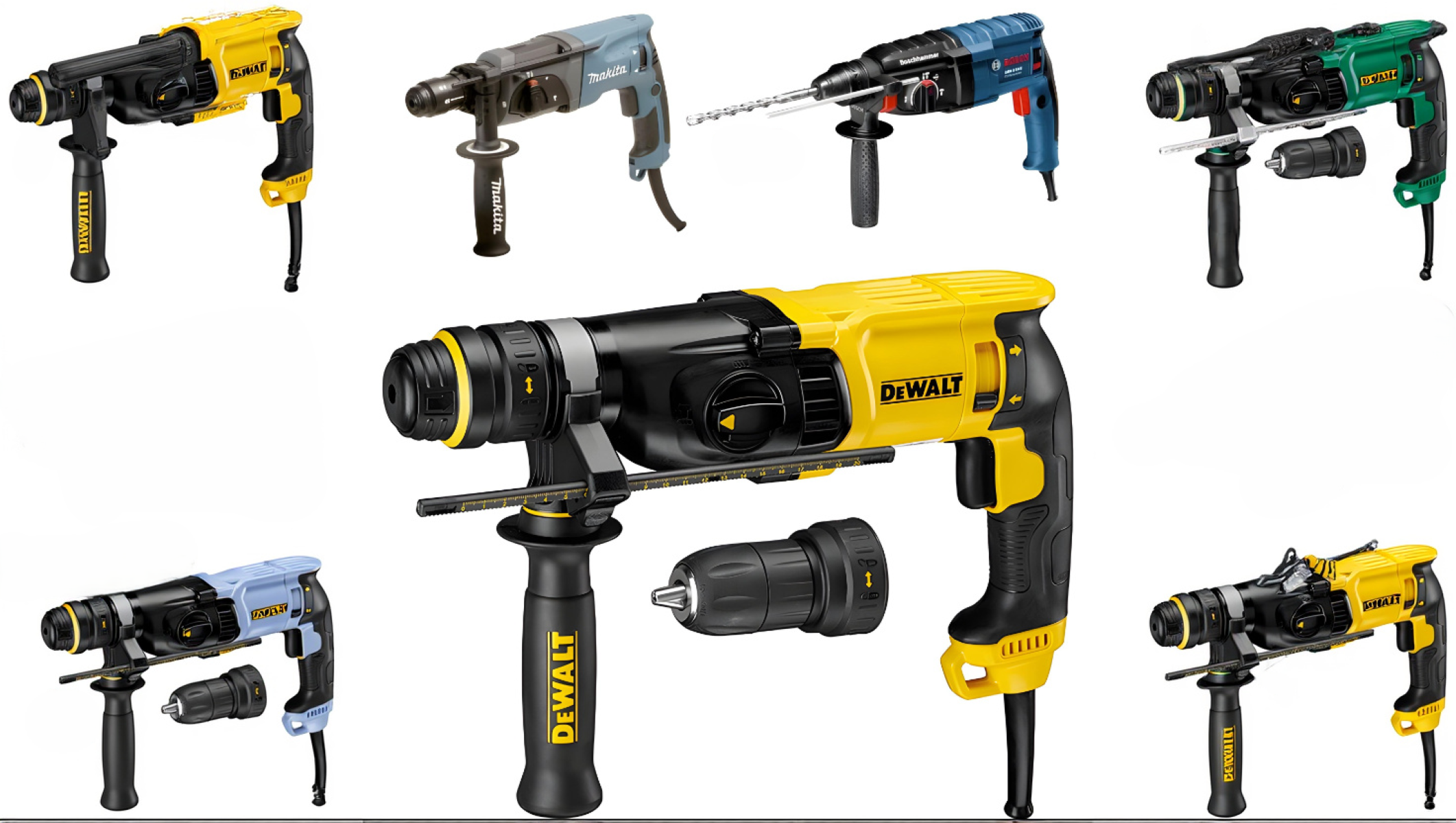When it comes to power tools, efficiency, and performance are essential. But, let’s face it—noise can be an issue. If you’re someone who works with tools on a regular basis, whether you’re a professional tradesperson or a DIY enthusiast, you’re probably aware of the high decibels these tools can produce. Over time, the constant noise can affect your hearing and become a source of frustration. But here’s the good news: sound modification accessories can help reduce the noise levels of your favorite power tools. In this article, we’ll dive deep into sound modification accessories for popular tool brands, how they work, and why they matter.
What Are Sound Modification Accessories for Tools?
Sound modification accessories are essential add-ons for reducing the noise produced by power tools during operation. These accessories are designed to help lower the decibel levels of tools without affecting their performance. Whether you’re using a drill, grinder, saw, or any other power tool, noise can become a significant issue, especially in environments where quiet operation is necessary. Over time, exposure to loud noise from tools can contribute to hearing loss or cause discomfort. Therefore, sound modification accessories have become increasingly popular in various industries and DIY projects.
These accessories come in a range of forms and can be installed on different types of power tools. The most common types include sound dampening covers, mufflers, silencers, and specialized attachments designed to reduce vibrations. Sound dampening covers, for example, are typically made from soft, noise-absorbing materials and fit over the tool’s motor and other components. These covers work by absorbing sound and vibrations, which helps to lower the overall noise produced by the tool during use.
Another popular option is mufflers and silencers, which are typically added to the exhaust or airflow areas of tools. These accessories work by redirecting or muffling the sound created by the tool’s motor or exhaust system. Tools such as air compressors, pneumatic tools, and saws often benefit from mufflers, which reduce the noise produced by the exhaust gases or airflow. By reducing the sound at the source, mufflers help make the tool more user-friendly and less disruptive to the surrounding environment.
Finally, there are noise-reduction blades and attachments, which are particularly useful for tools like saws, grinders, and other cutting tools. These accessories are designed to reduce vibrations and minimize the sound that occurs when cutting through different materials. Noise-reduction blades work by smoothing out the cutting process, which helps reduce both the amount of noise and the vibrations that can cause discomfort during prolonged use. The primary goal of all these sound modification accessories is simple: to create a quieter, more comfortable work environment without compromising the tool’s efficiency or performance.
Why Is Sound Reduction Important in Tools?
Sound reduction in tools is a crucial aspect that should not be overlooked. While you might be accustomed to the noise your tools make, there are several key reasons why prioritizing sound reduction can make a big difference:
- Hearing Protection: Prolonged exposure to high levels of noise can lead to irreversible hearing damage. Tools like drills, saws, and grinders can produce sound levels well above the safe threshold for hearing. Sound reduction accessories help lower the decibel levels, minimizing the risk of noise-induced hearing loss over time.
- Better Work Environment: A quieter workspace significantly improves the overall working conditions. Excessive noise can cause fatigue, stress, and distraction, making it harder to focus on the task at hand. Reducing the noise helps you maintain a calmer, more focused state of mind, leading to improved productivity and comfort.
- Neighbor and Community Relations: If you’re working in an area with close proximity to neighbors, sound reduction becomes even more important. Constant loud noise can lead to complaints, strained relationships, and even legal issues in some cases. By reducing the noise your tools produce, you not only protect your own hearing but also maintain peaceful relationships with the people around you.
How Do Sound Modification Accessories Work?
| Method | Description | Materials Used | Effect | Tools Affected |
| Absorption | Materials like foam or rubber are used to absorb vibrations and noise generated by the motor and moving parts of the tool. | Foam, Rubber | Reduces sound and vibrations by absorbing them. | Drills, Saws, Grinders |
| Damping | Specialized coatings or wraps are applied to the tool to prevent sound waves from resonating and amplifying within the tool. | Specialized Coatings, Wraps | Dampens sound waves, preventing unwanted echoes. | Air Compressors, Power Tools |
| Redirection | Mufflers or sound redirects are installed to redirect sound waves away from the user and the surrounding area. | Metal, Plastic, Fiberglass | Redirects noise away from the tool user and the environment. | Chainsaws, Gas-Powered Tools |
| Vibration Reduction | Vibration-damping materials help reduce the vibration felt by the user, which also contributes to sound reduction. | Rubber, Gel, Silicone | Lessens vibrations that often contribute to noise. | Sanders, Grinders, Hand Tools |
| Enclosures | Protective enclosures or covers trap sound within the accessory or tool casing, preventing it from escaping into the environment. | Plastic, Steel, Composite | Traps noise within the tool casing, reducing exposure. | Compressors, Lawn Equipment |
Popular Tool Brands That Benefit from Sound Modification Accessories
Different tools come with varying noise levels, and some of the most popular power tool brands are known for their loud operation. Fortunately, these brands have developed sound modification accessories to help reduce the noise and create a more comfortable working environment. Let’s explore how some of the biggest names in the tool industry benefit from these accessories.
DeWalt is renowned for its high-performance and durable tools, but noise can often be a downside when using their equipment. Whether you’re working with a hammer drill, saw, or impact wrench, the sound can be overwhelming. To address this, DeWalt offers sound dampening covers that are designed to fit snugly over the motor and other internal components, reducing noise without compromising the tool’s performance. For air compressors, DeWalt provides mufflers that fit over the exhaust ports, significantly reducing the noise emitted during operation.
Makita is another trusted brand known for producing powerful tools. However, much like DeWalt, the noise levels of their tools can be quite high. Makita addresses this concern by offering quieter, vibration-reducing blades for their circular and jigsaw saws. These blades help reduce both noise and vibrations, creating a quieter and more comfortable working experience. Additionally, Makita offers mufflers for grinders and air compressors, which minimize the noise produced by airflow.
Bosch tools are widely used in both residential and commercial settings. However, many of their tools, such as drills, grinders, and sanders, can be loud. Bosch has developed a range of noise-reducing accessories to make their tools more user-friendly. Acoustic covers for motors and other components are designed to significantly dampen the noise levels. Bosch also offers silencing attachments for tools like angle grinders, which attach directly to the exhaust areas, reducing noise while maintaining tool performance.
Types of Sound Modification Accessories Available
There are several types of sound modification accessories designed to reduce the noise produced by power tools. Each accessory serves a specific purpose and is suited for different tools. Here’s a breakdown of the most common types:
- Sound Dampening Covers
These are the most popular sound modification accessories. They fit over the tool’s motor and internal parts, absorbing sound and vibrations. Made from materials like foam, rubber, or other noise-absorbing materials.- Benefits:
- Easy to install and remove
- Affordable
- Compatible with a variety of tool models
- Best For:
- Drills
- Grinders
- Sanders
- Mufflers and Silencers
These accessories are attached to the exhaust or airflow components of tools, helping to redirect or muffle the sound produced during operation.- Benefits:
- Significantly reduces decibel levels
- Ideal for pneumatic tools and air compressors
- Easy to install
- Best For:
- Air compressors
- Pneumatic tools
- Quiet Blades and Attachments
Special quieter blades designed for cutting tools like saws. These blades are engineered to cut smoothly, reducing the noise generated by the tool during operation.- Benefits:
- Reduces noise during cutting tasks
- Provides smoother cuts, which lowers vibration
- Best For:
- Circular saws
- Jigsaws
- Vibration-Reducing Pads
These pads absorb the vibrations produced by power tools, which in turn reduces the amount of noise created. They are usually made from rubber or cushioned materials.- Benefits:
- Helps reduce both noise and physical strain on the user
- Ideal for tools that produce a lot of vibrations
- Best For:
- Grinders
- Sanders
- Benefits:
- Benefits:
- Benefits:
- Benefits:
How to Choose the Right Sound Modification Accessory for Your Tools
| Factor | Description | Recommended Accessories | Tool Examples | Additional Considerations |
| Tool Type | Consider the type of tool you’re using (drill, saw, grinder) and where the noise is coming from. | Sound Dampening Covers, Quiet Blades, Vibration-Reducing Pads | Drills, Saws, Grinders | Ensure proper fit and application to maximize noise reduction. |
| Noise Level | If your tool is particularly loud, you may need a more robust solution like a muffler or sound-dampening cover. | Mufflers, Silencers, Sound Dampening Covers | Impact Wrenches, Air Compressors, Pneumatic Tools | For extremely loud tools, consider combining multiple accessories for optimal effect. |
| Compatibility | Ensure that the accessory is compatible with your tool brand and model for optimal performance. | Check tool specifications for compatible accessories (brand/model-specific) | Bosch, Makita, DeWalt (check for model compatibility) | Research your tool’s specifications for precise compatibility. |
| Budget | There are affordable options available, but some high-performance accessories may come at a higher cost. | Affordable options: Sound Dampening Covers, Vibration Pads; Higher-end: Mufflers, Silencers | Budget tools: Ryobi, Black & Decker; High-performance tools: DeWalt, Milwaukee | Weigh cost against the long-term benefits of noise reduction in a work environment. |
Installing Sound Modification Accessories: A Simple Guide
Installing sound modification accessories on your tools is generally a straightforward process, but there are a few important steps to keep in mind to ensure the best results. The first thing you should always do is read the manufacturer’s instructions carefully. These guidelines are specifically tailored for the accessory you’re installing and can provide vital information on how to properly attach or fit the accessory to your tool.
Next, it’s crucial to check the compatibility of the accessory with your specific tool model. Not all sound modification accessories fit every tool, and using one that doesn’t match can lead to inefficient performance or even damage. Verify that the accessory is designed for the brand and model of your tool, and make sure to follow any size or fitting guidelines provided by the manufacturer.
Once you’ve confirmed compatibility, ensure that the accessory is installed correctly. For sound-dampening covers, make sure they are securely placed around the motor and other noisy parts of the tool. If you’re installing a muffler or silencer, ensure it’s tightly fitted onto the exhaust or airflow components. Incorrect placement can reduce the effectiveness of the accessory, meaning the noise reduction will be minimal or nonexistent.
Finally, after installing the accessory, always test the tool to make sure everything is functioning properly. Run the tool through a short operation to check for any unusual noises or issues. You should be able to notice a reduction in the overall sound level. If the noise is still loud or the tool doesn’t operate smoothly, double-check the installation and placement to ensure the accessory is installed correctly.




